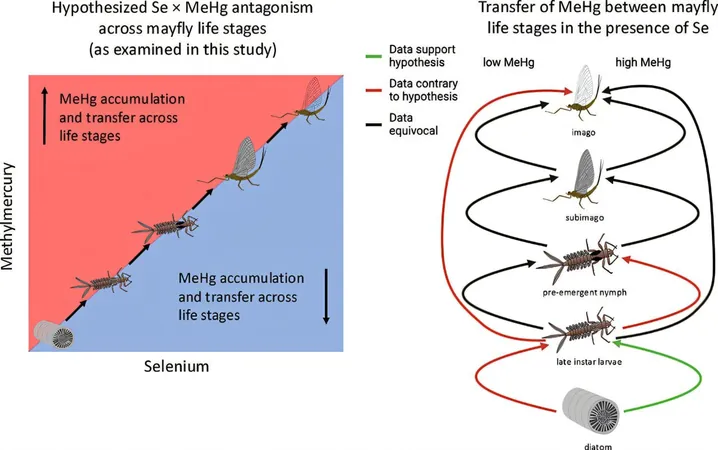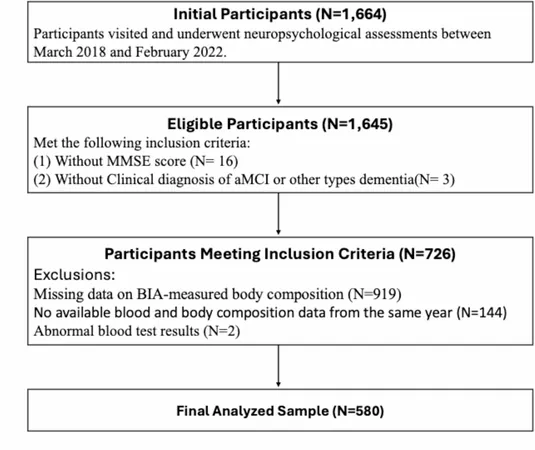
New Study Exposes Flaw in Selenium Solutions for Mercury Pollution
2025-04-28
Author: Jacques
Could adding selenium to combat mercury contamination in our waterways be too good to be true? A recent groundbreaking study from Cornell University and the U.S. Geological Survey (USGS) suggests it might be.
Published on April 16 in Environmental Science & Technology, the study investigated the impact of selenium on mayflies, a vital component of the aquatic food web. Researchers discovered that while adding selenium could help mayfly larvae avoid mercury accumulation at low mercury levels, it backfired in situations with high mercury concentrations—which is precisely when remediation is most crucial.
Jacqueline Gerson, an assistant professor and lead author, pointed out that mayflies act as primary consumers, consuming contaminated aquatic plants and introducing mercury into the broader food chain. This has serious implications, especially since mercury is a potent neurotoxin that can severely harm the nervous systems of fetuses and young children.
Previous studies suggested that selenium might mitigate mercury's toxicity in larger fish species that humans consume. This led to suggestions that selenium could be a potential treatment for mercury-contaminated waters. However, the new findings contradict that notion.
Higher selenium exposure was linked to increased mortality in mayflies and delayed emergence from their larval stage. The global culprits of mercury pollution primarily include fossil fuel combustion and gold mining.
In their study, researchers replicated natural mercury levels found in contaminated ponds, such as those near gold mines in Peru, as well as unpolluted waters in the U.S. They tracked how mercury affected mayflies throughout their life cycle, revealing that these insects retain more mercury as adults than they do in their larval stages.
"We have been concentrating on mercury's bioaccumulation in aquatic ecosystems, yet our study shows emerged mayflies carry higher mercury levels than their larvae," said Gerson. This indicates that terrestrial predators, like frogs and birds, may be exposed to even higher mercury concentrations, effectively transferring aquatic contamination to land.
Looking ahead, Gerson emphasized the need for further research to explore harmful interactions between these elements at the base of the food web and to seek better solutions for mitigating mercury pollution.
"Considering the current evidence, introducing selenium into mercury-affected systems would be ill-advised and could result in catastrophic impacts on aquatic ecosystems. Until we understand the full consequences, such remediation is not feasible," Gerson concluded.









 Brasil (PT)
Brasil (PT)
 Canada (EN)
Canada (EN)
 Chile (ES)
Chile (ES)
 Česko (CS)
Česko (CS)
 대한민국 (KO)
대한민국 (KO)
 España (ES)
España (ES)
 France (FR)
France (FR)
 Hong Kong (EN)
Hong Kong (EN)
 Italia (IT)
Italia (IT)
 日本 (JA)
日本 (JA)
 Magyarország (HU)
Magyarország (HU)
 Norge (NO)
Norge (NO)
 Polska (PL)
Polska (PL)
 Schweiz (DE)
Schweiz (DE)
 Singapore (EN)
Singapore (EN)
 Sverige (SV)
Sverige (SV)
 Suomi (FI)
Suomi (FI)
 Türkiye (TR)
Türkiye (TR)
 الإمارات العربية المتحدة (AR)
الإمارات العربية المتحدة (AR)